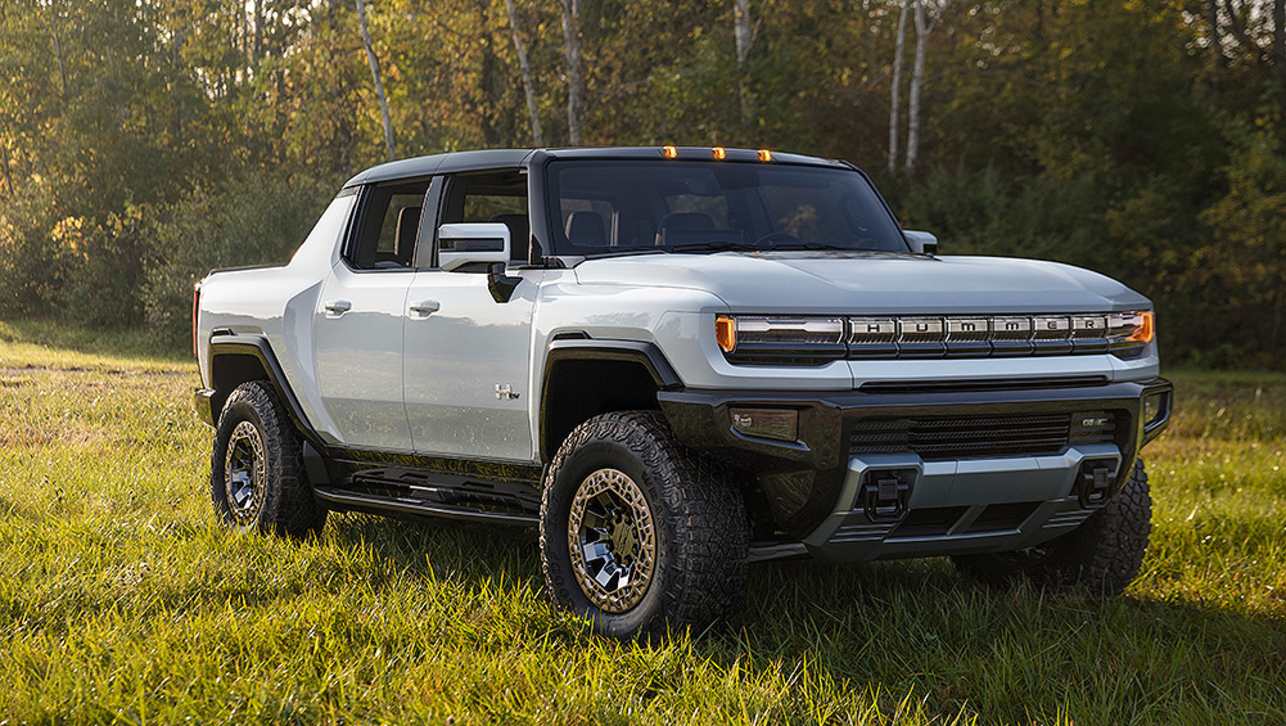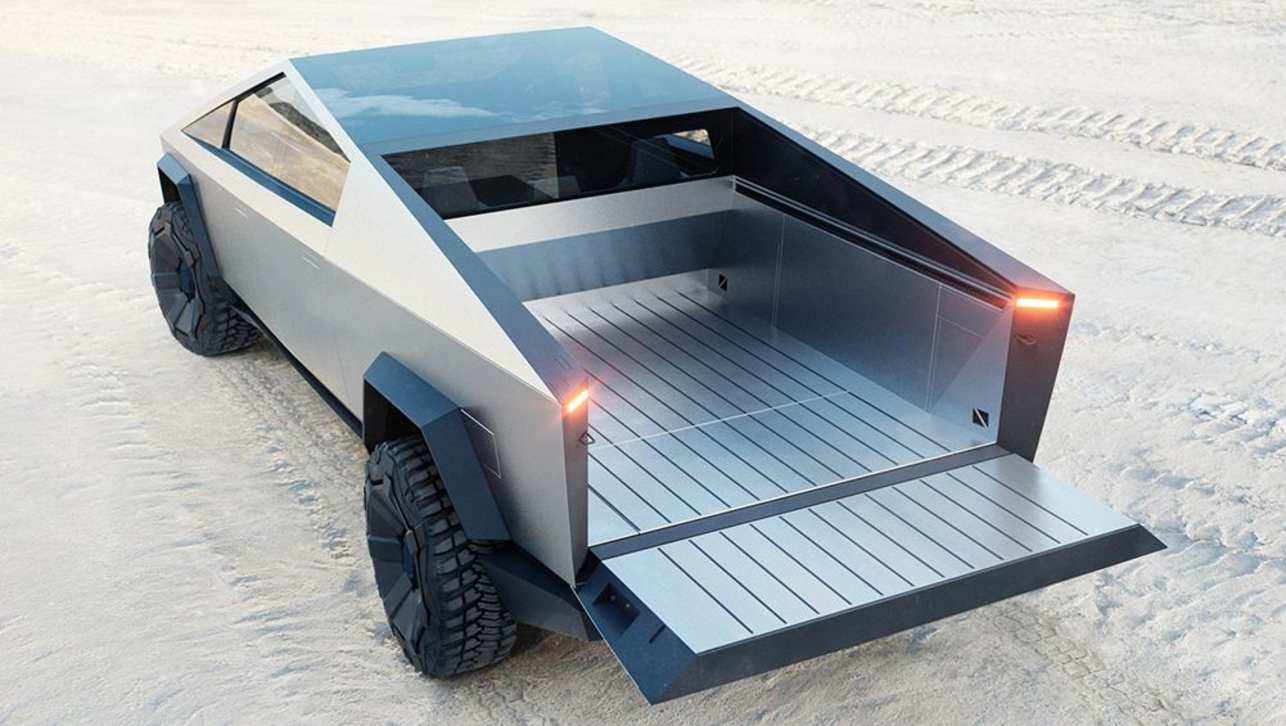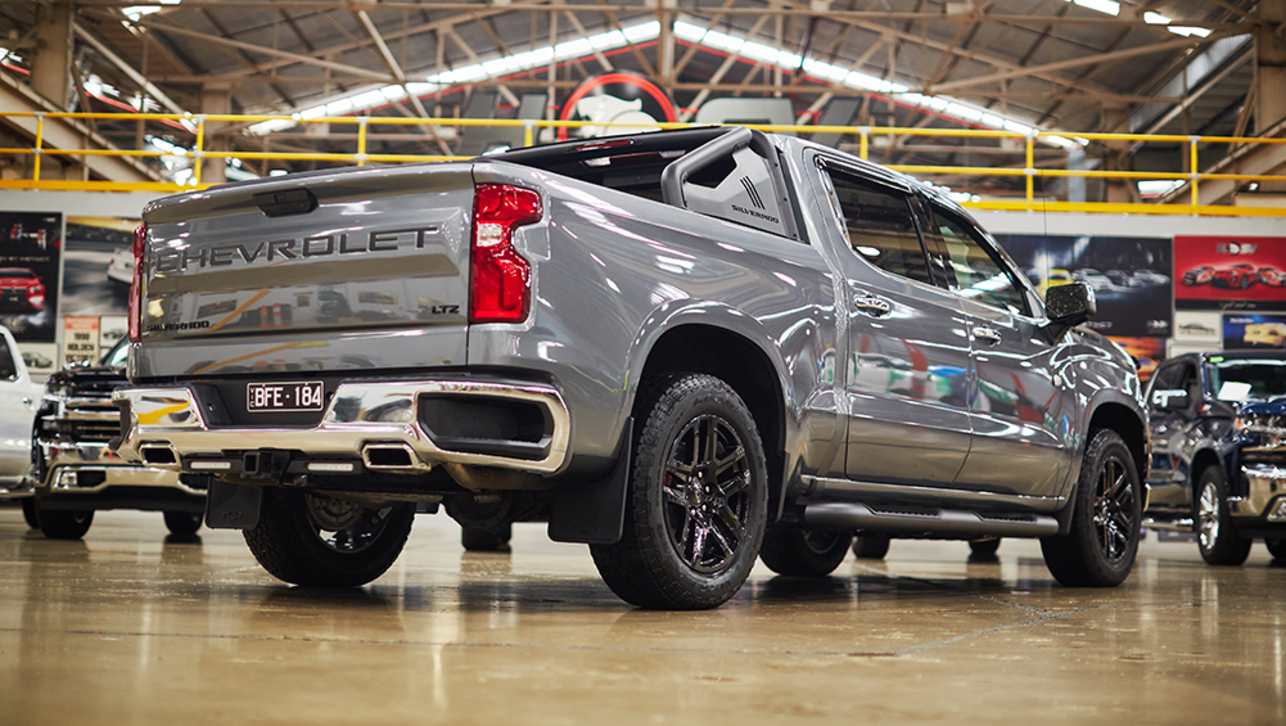With much fanfare (and an embarrassing window failure) Tesla revealed the ground-breaking Cybertruck in November 2019.
It was a truly revolutionary car and promised to give the brand its biggest boost since the arrival of the original Model S, it’s first totally in-house model. It looked unlike anything the rest of the industry offered, promised sports car levels of performance and was made from cold-rolled stainless steel.
The so-called ‘Tesla Armour Glass’ infamously failed during Musk’s demonstration, but the fact the company even considered putting such a feature on its ute was a sign of how unique and different the Cybertruck was.
And whether you loved or hated the looks, you had to give credit to Tesla for trying something different to get some cut-through in arguably the toughest market to crack in the US.
Just like Australia had a ‘Ford v Holden’ culture, in the US you’re either an F-150, Silverado or Ram person (or maybe a Tundra supporter if you don’t mind thinking outside the box), with the biggest names commanding intense customer loyalty.
Trying to pry customers from their Ford, Chevy or Ram without doing something different was going to be a tall order for Tesla, so making the Cybertruck so radical isn’t the bold gamble you might think, instead it’s a savvy business move.
What isn’t savvy or good business is the fact that the Cybertruck is still not on sale more than two years after its big reveal.
.jpg)
Tesla has always liked to show a near-production model, collect orders and then spend another year or two finishing the engineering and beginning production - it has done that for the majority of its cars and it’s worked.
The problem is, when the Cybertruck was revealed, Ford, Chevrolet and Ram were all caught napping, without an electric pickup of their own to counter Tesla, but that has changed dramatically.
Ford revealed its F-150 Lightning in May 2021 and the production line is rolling with the first customers already on the road. The same is true of perhaps Tesla’s most direct rival, the start-up EV brand Rivian, which began customer deliveries of its R1T in the back-end of 2021.
Over at General Motors, the GMC Hummer EV Pickup has begun hitting the streets and the Chevrolet Silverado EV has been revealed and is scheduled to go on sale sometime in 2023 (and unlike Tesla, Chevrolet has a strong track record of delivering cars when it says it will).

Then there’s Ram, now part of the Stellantis conglomerate, which has announced it will have not one, but two electric utes on sale by 2024. These will be an electric version of its popular 1500 and a smaller, Toyota HiLux-sized EV (rumoured to be badged Dakota).
Assuming Tesla can get the Cybertruck ready by the end of 2022, it will enter the market with three direct competitors instead of the zero it faced in 2019.
The only problem with that hypothesis is that there’s no guarantee Tesla will get the Cybertruck into production by the end of 2022 or even 2023. The American brand still needs to get its Roadster and Semi into production too, and both of those were revealed two years before the Cybertruck, in November 2017. That means those models are now effectively four years old in the eyes of the public - and there’s no clear on-sale date for either.
.jpg)
If the Cybertruck suffers the same fate, a four plus year wait, it will enter the market with the Silverado EV on sale and the Rams around the corner. While it will no doubt find an audience amongst Tesla’s loyal supporters, this ongoing delay means Tesla certainly won’t be able to maximise the sales potential the Cybertruck would have had if it had arrived, as planned, around now (early 2022).
This is just for the domestic US market, Australian Cybertruck fans could be waiting longer - or indefinitely as there is no official confirmation from Tesla that it will be sold locally. For Australia’s looking to buy an electric ute there are strong indications that the Rivian, GMC, Chevrolet and Ram could all be offered here by the end of the decade.
Rivian has made no secret of its desire to sell its R1T (and R1S SUV) in right-hand-drive markets, including Australia, once it has established itself in the US. There’s been no official timetable but indications are it could be as early as 2023 but, more likely, sometime in 2024.
.jpg)
As for the Hummer and Silverado, neither have been announced in right-hand drive, but that hasn’t stopped General Motors Specialty Vehicles setting up a successful business converting left-hand drive internal combustion-powered Silverados and selling them in big numbers locally.
Introducing the Silverado EV seems like a natural and, given the way the industry is headed, an inevitable move for GMSV. As for the Hummer, it will share much of its underpinnings with the Silverado but boasts a unique design and strong name recognition, so it could make a worthwhile addition to the GMSV portfolio.
It could be a similar story for Ram Trucks Australia, which has built a strong following with its petrol and diesel-powered 1500s (and bigger models) so an electric offering in a few years might be well-timed.
But as with the case of the Tesla Cybertruck, electric utes in Australia remains a ‘wait and see’ proposition.
Tesla Cybertruck rivals
| What | When |
| Rivian R1T | On sale now in USA/Likely for Australia by 2024 |
| Ford F-150 Lightning | On sale now in USA/Unlikely for Australia |
| GMC Hummer EV Pickup | On sale now in USA/Possible for Australia by 2023 |
| Chevrolet Silverado EV | On sale by 2023 in USA/Possible for Australia by 2025 |
| Ram 1500 Electric | On sale by 2024 in USA/Possible for Australia by 2026 |


.jpg)
.jpg)
.jpg)


.jpg)


.jpg)



.jpg)
.jpg)

.jpg)



_0.jpg)

.jpg)
.webp)
.jpeg)



.jpg)
Comments